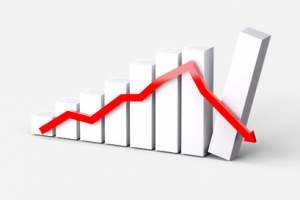By Keris Lahiff, CNBC [1]
Wall Street is breathing a sigh of relief after two sessions of plunges.
After starting Tuesday deep in the red, the Dow traveled a range of 1,100 points and in and out of positive territory. Then, it rallied to close near session highs and with its best one-day point gain – almost 600 points – since August 2015.
The big swing upside might be an outlier, according to Boris Schlossberg, managing director of FX strategy at BK Asset Management. He has turned more cautious on the market in the wake of the Friday-Monday sell-off.
"It's very natural for us to bounce back, but I think long term, the party is definitely over," Schlossberg told CNBC's "Trading Nation" on Tuesday.
The last three days on Wall Street have been unprecedented. On Friday, the S&P 500 sank more than 2 percent, its worst one-day drop since September 2016, and ended with its worst weekly loss in more than two years. Then, on Monday, the Dow plummeted by nearly 1,600 points before ending 1,175 points lower, its steepest one-day point decline in history.
Volatility made for chaos again on Tuesday. The Dow swung more than 500 points in both directions, the first time ever that it has traded that way. The VIX, which measures market volatility, rocketed to its highest level since August 2015 on Tuesday and had its biggest one-day percentage gain Monday.
By the end of Tuesday's session, the Dow had recovered nearly half of the losses suffered on Monday. The S&P 500 regained 41 percent of its losses.
While Tuesday marked a rebound from the two-day sell-off, Schlossberg sees more pain for equities ahead. These kinds of events aren't typically a "one-day wonder," he said.
"They tend to have more continuations, so I'd be careful trying to buy the dip at this point," he added.
Blame the end of easy money in equities on a more hawkish Federal Reserve and the bond rout, says Schlossberg.
The sell-off kicked off on Friday after a stronger-than-expected December jobs report and the best monthly gain in average hourly wages since 2009 spurred expectations of higher inflation. That raised the prospects of a central bank moving interest rates higher faster than forecast, which also sent bond prices falling and yields flying to four-year highs.
Markets have been pricing in three rate hikes this year, though some Fed members have suggested a fourth. More than 7 in 10 traders anticipate the next rate hike as soon as the Fed's March meeting, according to CME Group fed funds futures.
Before Friday's sell-off, the S&P 500 had risen 5.6 percent this year, while the Dow had gained nearly 6 percent. Both last hit a closing record high on Jan. 26. The Dow closed above 26,000 for the first time on Jan. 18.
From CNBC [1]
